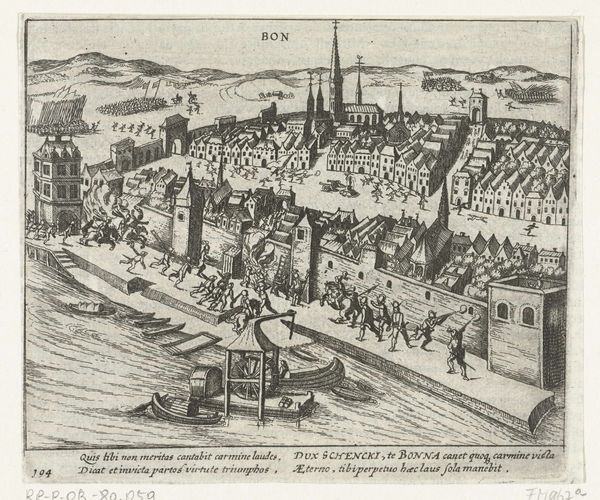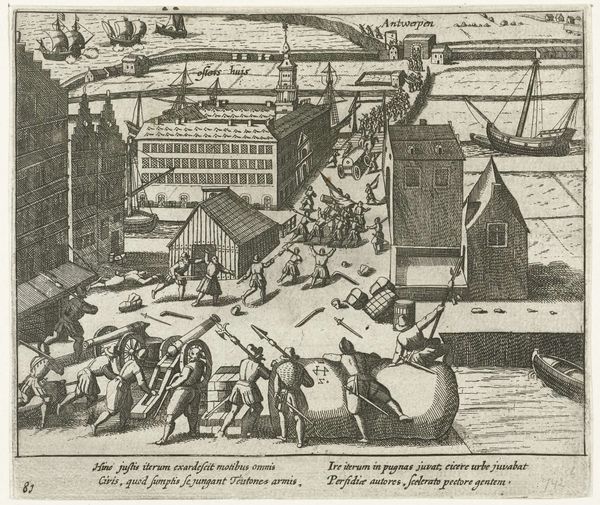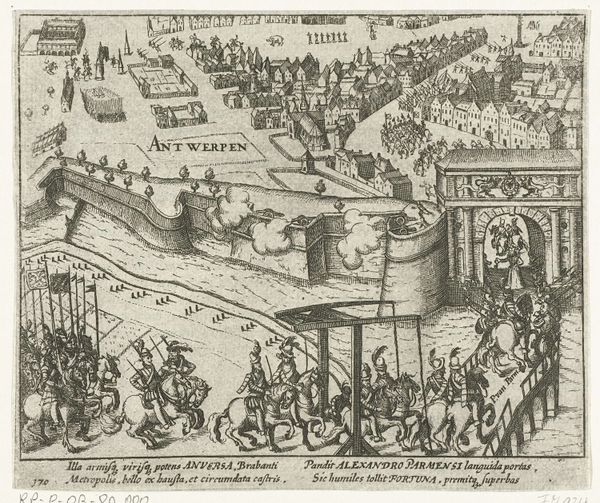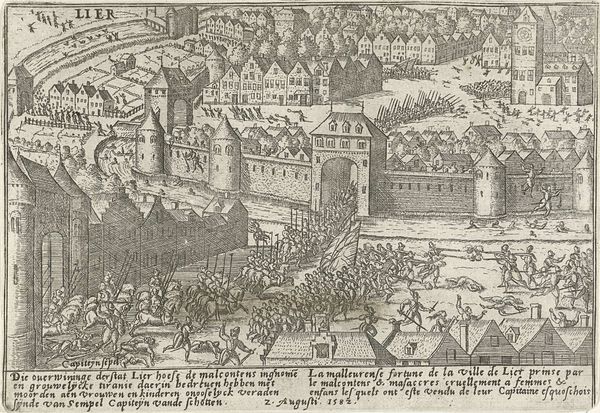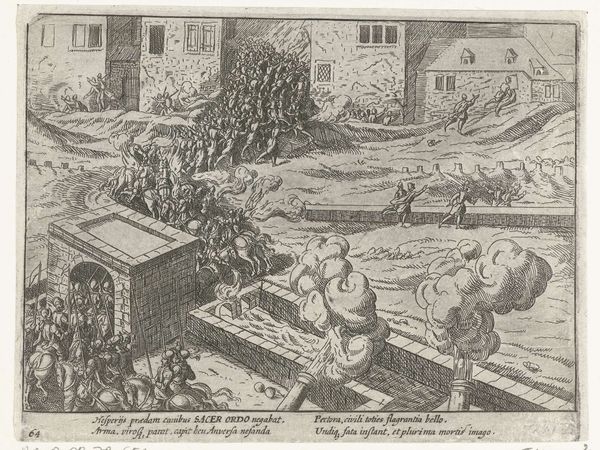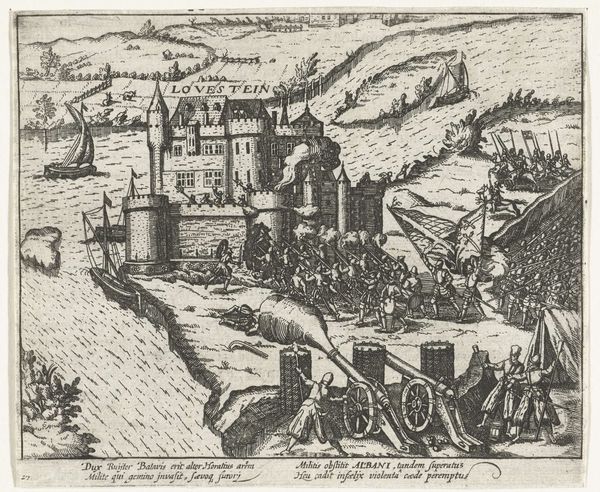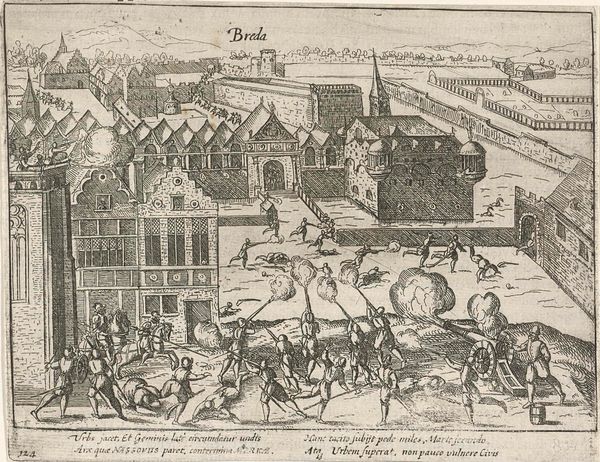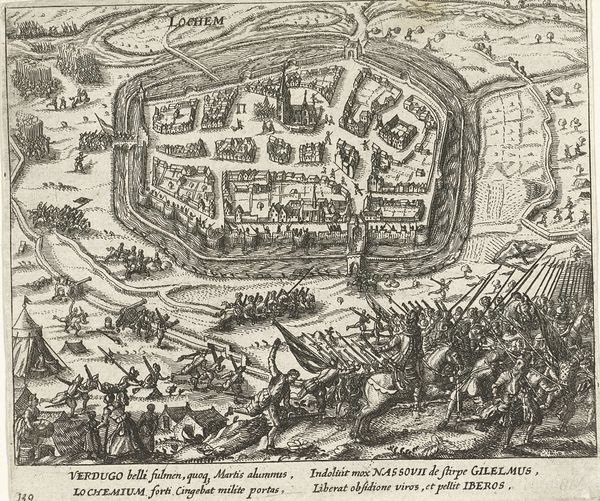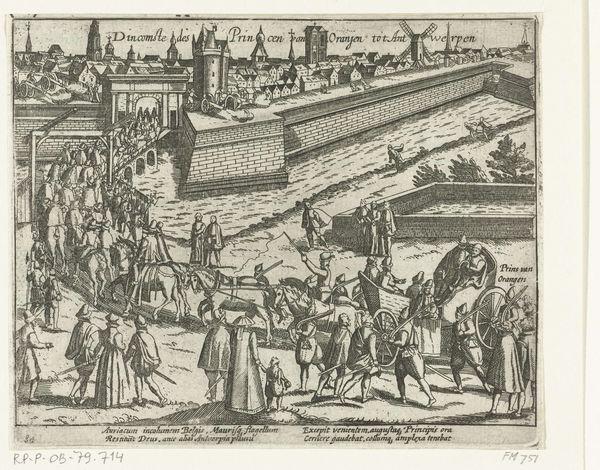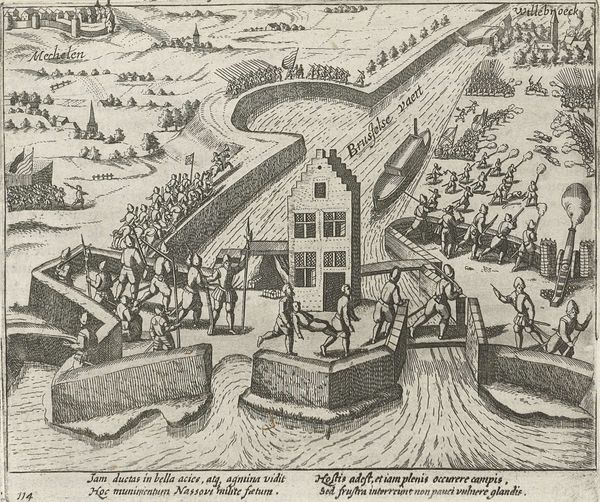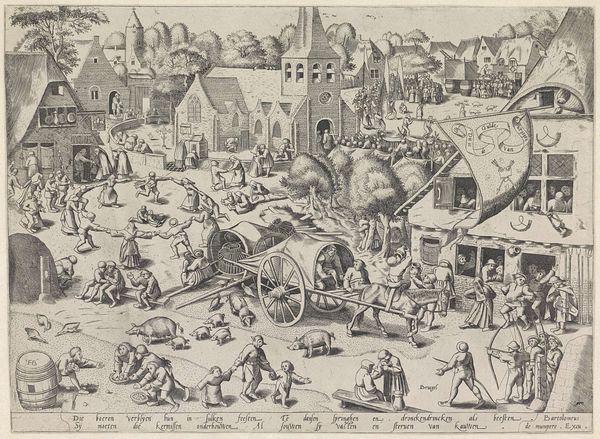
print, engraving
#
narrative-art
#
dutch-golden-age
# print
#
old engraving style
#
cityscape
#
history-painting
#
engraving
#
realism
Dimensions: height 134 mm, width 171 mm
Copyright: Rijks Museum: Open Domain
Curator: Here we have an engraving, made between 1613 and 1615, depicting the Siege of Maastricht in 1579. It's unsigned. Editor: My goodness, what a chaotic scene! The overwhelming sense is of disorder and struggle. Bodies are flung about, weapons raised—it's really quite visceral for a print. Curator: Indeed. Let's consider the composition. The anonymous artist uses a high vantage point to depict the city and the besieging forces simultaneously. Note how the rigid lines of the city walls contrast sharply with the dynamic curves of the figures in the foreground. Editor: That bridge becomes the focal point, doesn't it? It's almost like a stage upon which human drama plays out. Bodies falling into the water...it speaks to me of the desperation of those defending the city, a moment of profound loss. Curator: Absolutely. The engraving excels in visual rhetoric, carefully constructed contrasts to convey tension. Observe, too, how the perspective flattens toward the city, emphasizing its mass, its apparent impenetrability before the breach. The stark lines, the black and white contrast…it all creates a sense of harsh reality. Editor: It's interesting how they’ve used that almost bird's-eye perspective to flatten the narrative; to encompass the city's plight. And yet, within that generalized view, those figures in the foreground, their faces etched with pain, remind us that even epic conflicts are comprised of individual sufferings. I keep returning to the woman being flung from the bridge - an echo perhaps, of similar female figures in classical scenes of chaos. Curator: I agree; the use of these figures can allow us to consider some wider symbolic readings of suffering, and conflict in the work. There is careful application of light and shadow to articulate form and deepen the dramatic intensity which serves the core message of the scene. Editor: This small print holds such a powerful charge. Seeing such anguish and the sheer violence represented really hits home, and makes us ponder on how it affects each and every member of a population during the seize of a city. Curator: I agree. It reminds us of the powerful capability of simple formal choices and how even the sparsest rendering of graphic imagery holds narrative power.
Comments
No comments
Be the first to comment and join the conversation on the ultimate creative platform.
